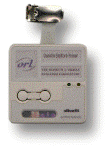
|
|
 |
VNC - the internal AT&T version
Some of the functionality of the distributed VNC system is limited when compared to the version we use within AT&T Laboratories Cambridge. This is not because we wish to deprive the rest of the world of a more sophisticated system, but because we want VNC to be easy to download and set up, and this extra functionality would make that process more complicated without offering major gains to most users.So this information is given partly for interest's sake, and partly to explain some things you may find in the source code. If there is overwhelming demand for these features we may make them available, but this is not currently planned.
CORBA
Many of our systems are now linked together using CORBA. We didn't find a commercial implementation of CORBA which met our requirements, and so we wrote our own, omniORB, which we have also made freely available. The VNC servers have a CORBA interface which allows them to be controlled by remote systems. In particular, the interface exposes the name, address and other details of the server, allows control of the client connections, can perform remote shutdown, and initiate outgoing connections.Outgoing connections
The simplest mode of operation for VNC is when a viewer initiates a connection to the server, but it can also operate in reverse. Some of our clients can be put into a 'listening' mode where they wait for connections from the server which are initiated and closed down using the CORBA interface. External control
External control
This means that desktops can be displayed and hidden under the control of other systems. In particular we use information from our Active Badge system to display a users' desktop on a nearby monitor when they click one of the buttons on the badge, and with our Ultrasound Location System we can make your desktop appear simply by walking up to a display!
![]() go back to documentation
go back to documentation
For comments, feedback, etc, please see the 'Keeping in touch' page.
Copyright 1999 - AT&T Laboratories Cambridge